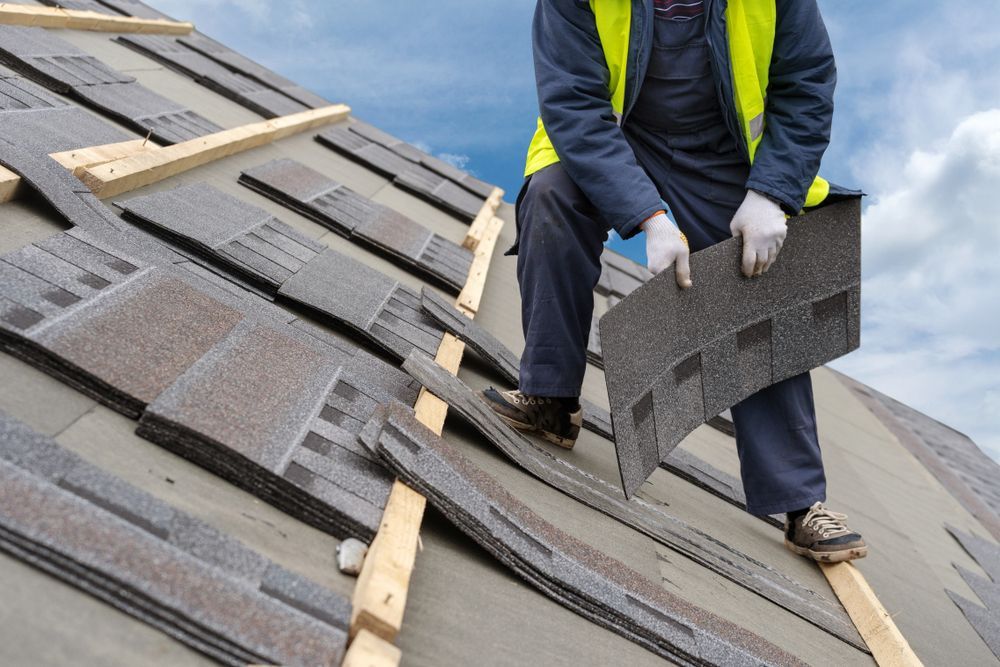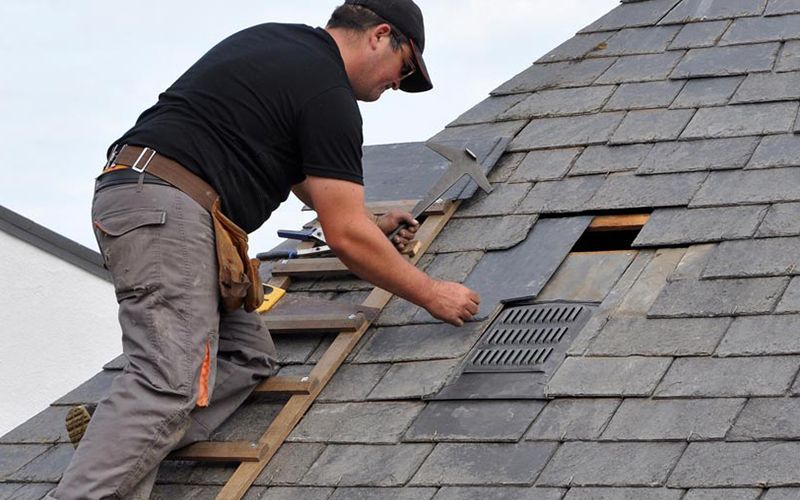Emergency Roof Patching
When roof disasters strike, you need help fast. At Washington DC Roofing Company, we provide 24/7 emergency roof patching services to protect your home from further damage. Water damage waits for no one, which is why our team is ready to respond quickly when you need us most.
Our emergency roof repair specialists typically arrive within 2 hours of your call, offering immediate solutions to prevent water intrusion and structural damage. We understand that roof leaks and storm damage can happen at any hour, so our emergency services are available around the clock, including weekends and holidays.
We handle all roof types in the Washington DC area, including slate, shingles, and metal roofing. Our technicians bring the right equipment and materials to perform temporary patches that keep your home dry until permanent repairs can be completed. With Washington DC Roofing Company, rest assured that your emergency roof situation will be handled promptly and professionally.

What Constitutes an Emergency
A roofing emergency typically involves situations that can cause immediate damage to your home. Obvious signs include water actively dripping from your ceiling, missing shingles after a storm, or visible holes in your roof structure. Fallen trees or large branches on your roof always qualify as emergencies.
Less obvious emergencies include ice dams in winter, which can force water under shingles, and damaged flashing around chimneys or vents. These issues might not cause immediate leaking but can lead to serious water damage if left unattended.
We consider situation that exposes your home to the elements an emergency. Our 24-hour response team arrives within 2 hours of your call to assess damage and implement temporary solutions.

Our Emergency Roof Patching Services
Rapid Response Team
Our emergency response team operates 24 hours a day, 365 days a year, ensuring we're always available when you need us most. We understand that roof emergencies don't wait for business hours, which is why we've established a dedicated dispatch system to respond quickly to your calls.
We typically arrive at your property within 2-4 hours after your call. Our trucks are fully equipped with all necessary tools and materials to address common roofing emergencies on the spot. Each team member is trained in emergency procedures and safety protocols. This means we can work efficiently even in challenging weather conditions when your roof is most vulnerable.
Assessment and Damage Control
Upon arrival, our technicians will quickly assess the situation to determine the extent of the damage. We use a systematic approach to identify all vulnerable areas, not just the obvious ones. We'll document the damage with photographs and measurements for your insurance claims. This thorough documentation often proves invaluable when dealing with insurance companies.
Our immediate priority is to stop water infiltration to prevent further interior damage. We'll place tarps, remove standing water, and secure loose materials that could cause additional damage. We'll also check your attic and interior ceilings for water intrusion that might not be visible from outside.
Temporary Patching Solutions
We employ several effective temporary patching methods depending on your specific situation:
- Emergency tarping: Heavy-duty, waterproof tarps secured to prevent water entry
- Adhesive roof patches: Quick-applying materials that bond to wet surfaces
- Roof cement applications: Flexible sealants that work on various roofing materials
- Temporary shingle replacement: Using matching materials when possible
Our temporary solutions are designed to be durable enough to protect your home until permanent repairs can be made. Unlike DIY fixes, our professional patches can withstand harsh weather conditions. We use commercial-grade materials that won't damage your existing roof structure when removed later.
Permanent Roof Repair Options
After emergency patching, we'll provide a detailed assessment of permanent repair options. We consider factors like roof age, material compatibility, and your budget. For minor damage, we can often schedule permanent repairs within days. More extensive damage might require comprehensive solutions including partial or full roof replacement. We work with all major roofing materials:
- Asphalt shingles
- Metal roofing
- Flat roof membranes
- Slate and tile
Our repair teams are factory-certified by manufacturers, ensuring warranty-compliant work. We'll help coordinate with your insurance company to maximize coverage for necessary repairs. We provide transparent, detailed quotes with no hidden fees or surprise charges.
Materials and Techniques Used

High-Quality Patching Materials
We stock only premium materials for emergency roof patching that stand up to DC's variable weather conditions. Our standard repair kits include:
- Rubberized roofing membranes that create watertight seals
- Polymer-modified bitumen for enhanced flexibility and crack resistance
- Commercial-grade sealants that bond effectively even in damp conditions
- Reinforced flashing materials for vulnerable roof transitions
These materials are selected specifically for their longevity and performance in emergency situations. Unlike store-bought options, our professional-grade materials won't deteriorate quickly after application.
We maintain a fully-stocked inventory on our service vehicles to address any emergency without delays. This means you won't have to wait for special orders when your roof is actively leaking.

Innovative Roofing Technologies
Our emergency patching techniques combine traditional craftsmanship with modern innovations. We utilize:
- Infrared moisture detection to identify hidden water intrusion points
- Quick-setting adhesives that cure rapidly even in cold temperatures
- Seamless application methods that prevent future failure points
- Temporary stabilization systems for severe damage containment
These technologies allow us to perform effective repairs in under two hours in most emergency scenarios. Our technicians are trained in both traditional hand-application methods and equipment-assisted techniques.
We match our approach to your specific roof type and the nature of the damage. This customized methodology ensures proper adhesion and integration with your existing roofing system without creating new vulnerabilities.
FAQs
TPO roofing installations come with many common questions from our customers. We've gathered the most important information about costs, durability, brands, and maintenance to help you make informed decisions.
What are the factors influencing the cost of a TPO roof installation?
Several key elements affect TPO roofing costs. The size of your roof is the primary factor, as larger areas require more materials and labor.
The thickness of the TPO membrane impacts pricing significantly. We offer options ranging from 45 mil to 80 mil thickness, with thicker membranes costing more but providing enhanced durability.
Your roof's complexity matters too. Buildings with multiple penetrations, HVAC units, or unusual shapes require more detail work and flashing.
Accessibility affects labor costs. If your roof is difficult to reach or requires special equipment, this will increase the installation price.
How long does a TPO roof typically last under normal weather conditions?
TPO roofs installed by Washington DC Roofing Company typically last 20-30 years with proper maintenance. This lifespan depends on several factors including membrane thickness and local climate conditions.
The quality of installation significantly impacts longevity. Our certified installation team ensures all seams are properly welded and details are correctly finished.
Modern TPO formulations have improved UV and heat resistance compared to earlier generations. This enhancement helps maintain reflectivity and structural integrity over time.
Regular inspections can help identify and address small issues before they compromise the roof's lifespan.
Which TPO roofing brand shows the highest performance and reliability?
We primarily install GAF and Firestone TPO systems due to their consistent performance records and extensive warranties. These manufacturers have refined their formulations over decades.
GAF EverGuard TPO offers excellent heat and UV resistance with their advanced material science. Their products perform exceptionally well in Washington DC's varying climate conditions.
Firestone UltraPly TPO provides superior puncture resistance and flexibility, maintaining performance through seasonal temperature changes. Their seam strength is among the industry's best.
Both brands offer comprehensive warranty options that can extend up to 30 years when installed by certified contractors like us.
Are there any notable drawbacks when using TPO roofing for commercial buildings?
Installation quality is critical with TPO systems. Poorly welded seams can lead to leaks and premature failure, which is why we invest in ongoing training for our installation teams.
Some older TPO formulations had issues with premature aging and cracking. Today's improved materials have largely resolved these concerns, but choosing a quality manufacturer remains important.
TPO can be punctured by sharp objects, making regular roof inspections necessary. We recommend establishing maintenance protocols after installation.
While highly energy efficient, TPO's initial cost may be higher than some traditional roofing systems, though this is typically offset by energy savings over time.
Can a TPO roof be installed over an existing roofing system, and what are the considerations?
Yes, in many cases we can install TPO over existing roofing, potentially saving on removal costs and reducing landfill waste. This approach is called a "recover" installation.
The existing roof must be structurally sound and relatively dry. We conduct moisture scanning to detect any trapped water that could compromise the new system.
Building codes typically limit commercial buildings to two roof layers. We'll verify local regulations and assess your current roofing situation during consultation.
Proper preparation may include adding recovery board insulation to create a smooth, compatible surface for the new TPO membrane attachment.
Tell Us About Your Roofing Project
Contact Us
Our Newsletter
We will get back to you as soon as possible.
Please try again later.
Subscribe For Newsletter
All Rights Reserved | Washington DC Roofing Company
